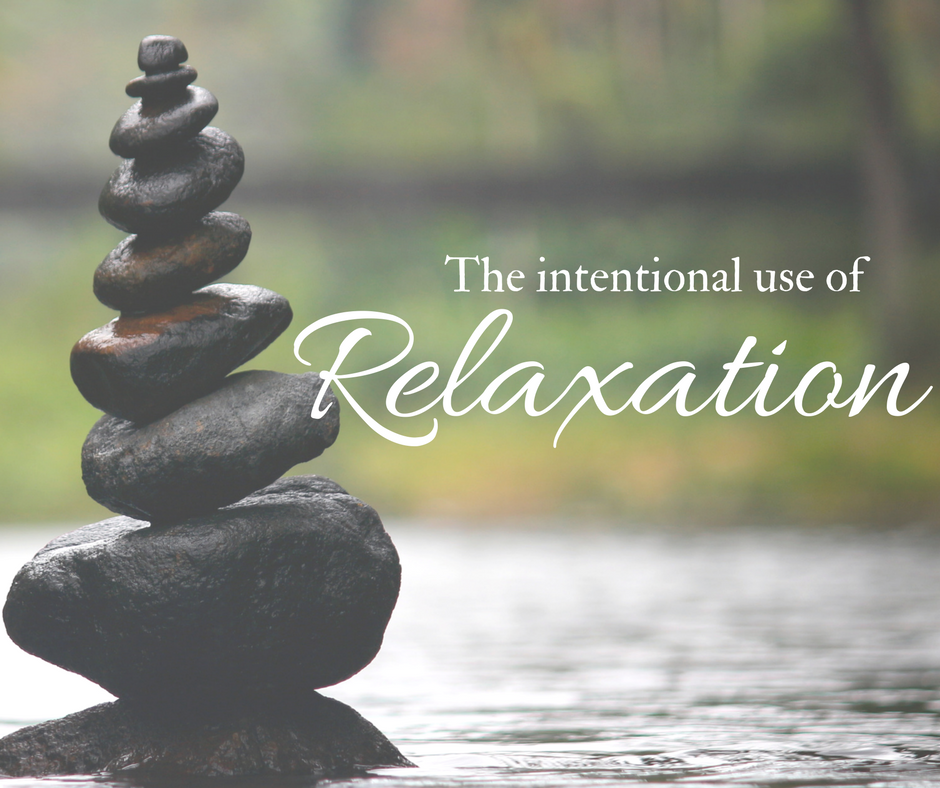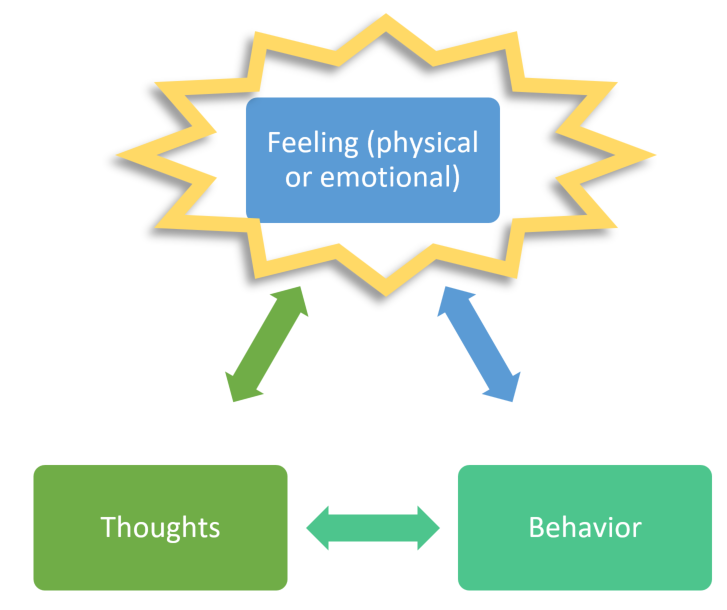Before we ease into relaxation mode, lets recap some basic anxiety information.
When you feel anxious, it often means there is a perceived danger which leads to a thought/feeling/behavior cycle known as the “3-Component Model”.
Relaxation techniques are tools, not solutions
Relaxation affects the feeling component (physical or emotional). Remember that relaxation is not a solution to anxiety, it’s a tool to help you in your anxiety.
If you’re using relaxation to help you in your anxiety, you’re consciously lowering the intensity of the “feeling” component. This allows you to put your body and mind in a state where you’re better able to manage anxious thoughts and avoid unhelpful behaviors. Healthy relaxation is choosing to calm yourself because you know you can handle your anxious thoughts.
I discourage clients from using relaxation as a form of avoidance, but can be useful in discrete situations:
- I’m about to give a speech.
- I’m in the middle of a final exam.
- I’m meeting my future in-laws for the first time.
- I’m in the hall waiting for my job interview.
So, what do you do then?
If you’re in one of those moments, it may help to engage in some relaxation. In these frustrating inconvenient moments, you may need to lower the intensity of your anxious feelings so you can focus on your immediate circumstances. This is not avoidance. Relaxation only becomes avoidance if you never go back to challenge your thoughts and evaluate your behavior.
Now to the fun stuff. How do I relax?
The two easiest areas to focus on for relaxation are:
- Breathing
- Muscle Relaxation
Breathing:
When we feel anxious, we tend to engage in short inhales and exhales. From a physiological standpoint, you are getting enough oxygen, but too little CO2. The brevity of your breathing (quickly in and out) doesn’t provide enough time for the O2 to convert to CO2 and exit the body through your exhalation (hyperventilation). This can make you feel light-headed and dizzy, or like you need to pass out. None of this helps your anxiety and usually makes it worse.
What we need are deep, long diaphragmatic breaths. These types of breathes allow your body to convert and then exhale CO2. There are lots of different types of breathing exercises and it may take time to find the types of breathing that are the most relaxing and calming for you. Below you’ll find a couple of ideas:
- Kaiser Permanente: Breathing
- Breathe to Relax App (Apple and Android)
Muscle Relaxation
When we are anxious, we often unintentionally tense our muscles. This can be done throughout the day and the tension can build up over time. How do you counter that? Muscle relaxation. The most common form of muscle relaxation involves isolating different areas of your body, tensing, then releasing.
A basic overview and script can be found here:
By regularly engaging in muscle relaxation, you can increase your awareness of tension in your muscles. This can enable you to regularly check on your general tension levels and regularly reduce those levels throughout the day.
As a bonus, you can practice your breathing and muscle relaxation wherever you go.


